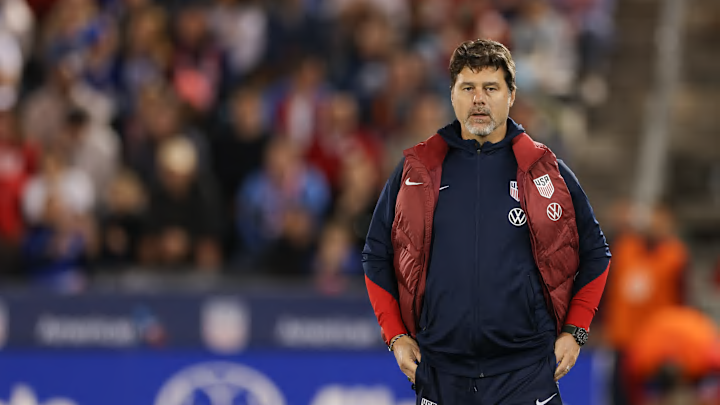Mauricio Pochettino coming on board as the U.S. men’s national team coach was the shot in the arm US Soccer thought they needed to take their national team to the next level ahead of the 2026 World Cup. Almost a year later, though, the initial excitement has given way to serious concern.
His biggest weakness — an inability to pin down a clear tactical approach — is becoming impossible for fans to brush off.
When US Soccer went all in on Pochettino in September 2024, the plan was to give the national team a much-needed dose of ambition and a winning mentality. On paper at least, his track record at the likes of Tottenham, PSG, and Chelsea looked ideal. Teams that were structured and made progress. But the reality with the USMNT under Pochettino has been a team that just can’t quite decide on its identity.
A team without a clear sense of direction
Pochettino’s biggest problem has been figuring out a playing style that works. He just can’t seem to settle on a formation — has been playing with a 4–2–3–1 one minute, a 3–4–2–1 the next — and has shuffled his starting line-up so much that it's starting to feel like players themselves are just not sure what to expect.
Pochettino has been constantly tinkering with his tactics, resulting in players being left in the dark as to what to do next.
We saw this play out in a losing March 2025 Nations League match against Panama ; not the first time we’ve seen US players look just unsure of what was going on, either in possession of the ball or when they lost it. And it’s been a recurring problem.
Worse yet, Pochettino’s explanation for it hasn’t been particularly helpful . He calls his system “organized chaos” and claims he hates being predictable, which, on paper, sounds great , but in practice, is creating more questions than answers.
“That is the thing that I hate, being predictable,” Pochettino told CBS Sports recently, “but you need these types of talents, talented players that can do different things from respecting the organization, but having the possibility to also create the chaos in the opponent because he’s creating the chaos in the other team, but with organization. I don’t know if I can explain, but I try.”
The thing is, at the club level this approach used to be a real winner for him. Because he had a stable environment and his teams were well into the rhythm of his system by the time they stepped out onto the pitch. But at the international level, things are just a lot more complicated. Clarity in the system has got to come before creativity, at the end of the day.
Fans are left asking the same questions: what does this team look like at its best? What are our starting 11? And how does the team adapt when it gets down to business under pressure? And at this point, the answers just aren’t there.
With the World Cup less than a year away and it’s being held on home soil, the pressure is really on.
